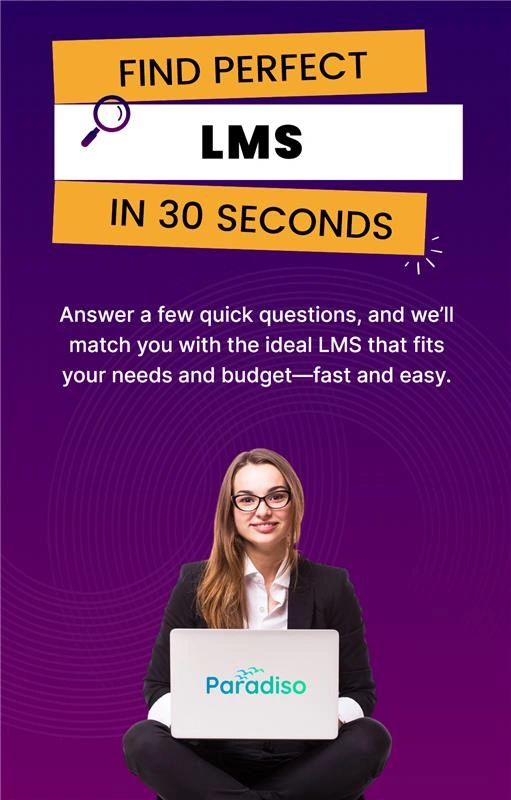In 2025, the landscape of Learning Management Systems (LMS) continues to evolve rapidly, driven by technological innovations, changing learner expectations, and the increasing demand for accessible, scalable e-learning solutions. As educational institutions and organizations shift towards digital training, understanding the key differences between free and paid LMS platforms has become essential for making informed decisions that align with strategic goals.
Technological advancements have transformed education, placing LMS platforms at the core of engaging, personalized learning experiences. Features such as AI-driven content recommendations and seamless mobile access are now standard, with modern LMSs offering progressively sophisticated functionalities. Generally, free LMS platforms provide basic features, while paid solutions include advanced analytics, customizable interfaces, and integration capabilities with other enterprise systems.
Choosing between free and paid LMS options impacts both budget considerations and long-term effectiveness. Free LMSs are attractive due to their zero initial costs, making them suitable for small teams or testing new ideas. However, they often lack features critical for larger or compliance-driven environments, such as dedicated support, security, and scalability.
On the other hand, paid LMS platforms tend to include comprehensive functionalities, regular updates, and dedicated support teams. These features ensure stability, security, and adaptability, making paid solutions better suited for organizations with growth plans or complex training needs. Therefore, understanding these differences helps organizations select a platform that best supports their learning ecosystem now and in the future.
All-in-One Free LMS
for Organizations Across Industries
Say goodbye to trials and unreliable open-source solutions. Unlock the full potential of your team with Paradiso’s free LMS – the easiest way to streamline learning and development.
Free Versus Paid LMS Options: Key Features and Use Cases in 2025
Choosing the right Learning Management System (LMS) in 2025 requires understanding the broad spectrum of free and paid solutions, each tailored to different organizational needs—from startups to large enterprises. Awareness of their features, typical use cases, and recent industry trends helps in making strategic decisions aligned with organizational goals.
Free LMS platforms, often open-source or freemium models like Paradiso Free LMS, Moodle, TalentLMS (free tier), and Canvas LMS, offer essential functionalities suitable for educational institutions, nonprofits, or startups testing e-learning initiatives. They typically support basic course creation, learner tracking, and assessment tools, with open-source options allowing extensive customization—though often requiring technical expertise.
Alternatively, paid LMS solutions such as Blackboard, Docebo, Cornerstone OnDemand, and SAP Litmos provide an extensive array of features designed for large-scale deployment. These include automation, gamification, detailed analytics, and seamless integrations with HR and content management systems—beneficial for organizations with more complex, scalable training programs.
Core Features of Modern LMS Platforms
- Content management tools supporting multimedia, SCORM, and AICC standards
- Automated assessments, certifications, and compliance tracking
- Advanced analytics dashboards powered by AI insights
- Mobile-friendly interfaces and microlearning modules
- Integrations with enterprise systems like HRIS and CRM
- User experience features including accessibility and intuitive design
Common Use Cases in 2025
- Corporate compliance training and skill development
- Higher education blended and remote learning programs
- Professional certifications and continuous learning
- Onboarding and leadership development
- Customer and partner training modules for improved engagement
Emerging Trends Influencing LMS Adoption
- AI-powered personalization for tailored learning paths
- Hybrid models combining synchronous and asynchronous learning
- Mobile-first and microlearning strategies for on-the-go learners
- Data-driven analytics predicting learner risk and performance
- Enhanced accessibility and inclusivity standards
- Cloud-based scalability supporting global remote access
- Open ecosystems for flexible integration with third-party tools
In summary, selecting between free and paid LMS platforms depends on organizational scale, budget, and specific requirements. While free options like Paradiso and Moodle serve well for smaller projects, enterprise solutions such as Docebo provide the advanced features necessary for growth and compliance. Staying abreast of industry trends ensures that your LMS choice remains relevant and effective in 2025 and beyond.
Essential Features of Free LMS Platforms and Advanced Functionalities of Paid Solutions
Learning Management Systems (LMS) are vital for delivering effective online training. Free LMS platforms commonly offer core features that support basic e-learning needs—ideal for small organizations or educational settings. However, as organizations seek to improve engagement and efficiency, paid solutions introduce advanced functionalities, such as AI, mobile optimization, and personalized learning that significantly elevate the learning experience.
Core Features of Free LMS Platforms
- Course creation, organization, and multimedia content support
- User enrollment, progress tracking, and basic reporting
- Assessment tools including quizzes and surveys
- Discussion forums and communication channels
- Basic analytics for monitoring engagement and completion rates
Limitations of Free LMS Platforms
- Limited customization options and branding controls
- Challenges in integrating with other enterprise systems
- Basic mobile responsiveness, sometimes with limited functionalities
- Insufficient advanced analytics and predictive insights
Advanced Functionalities of Paid LMS Solutions
- Artificial Intelligence (AI): Personalizes content, automates grading, and provides tailored recommendations to boost engagement and outcomes.
- Enhanced Mobile Access: Fully responsive apps ensure learners can access content seamlessly on any device.
- Customized Learning Paths: Enables tailored journeys for individual learners based on their goals and performance.
- Collaboration Tools: Live webinars, chat, and social learning features foster active participation.
- Robust Integration: Seamless connections with HR systems, content libraries, and analytics platforms streamline workflows.
Impact on User Experience
The use of AI, mobile responsiveness, and personalized pathways makes learning more relevant and engaging while offering flexibility. Automated administrative tasks save resources, allowing educators and administrators to focus on content quality and learner support.
Organizations aiming for a competitive edge should evaluate these capabilities thoughtfully. Platforms like Paradiso LMS exemplify comprehensive solutions that combine AI, mobile functions, and integrations to ensure a modern, effective e-learning environment.
All-in-One Free LMS
for Organizations Across Industries
Say goodbye to trials and unreliable open-source solutions. Unlock the full potential of your team with Paradiso’s free LMS – the easiest way to streamline learning and development.
Unveiling Hidden Costs in LMS: Free Options, Paid Platforms, and Growth Considerations
Hidden Costs of Free LMS Platforms
While free LMS solutions—such as Paradiso LMS or Moodle’s free tier—appear cost-effective initially, organizations should be aware of hidden expenses:
- Limited features and scalability may require upgrades or custom development
- Hosting, infrastructure, and bandwidth costs as usage grows
- Potential need for paid support and maintenance due to limited community resources
- Restrictions on customization and branding, possibly requiring third-party development
- Security vulnerabilities and compliance gaps risking data breaches or legal issues
Costs of Paid LMS Platforms
Paid solutions involve licensing fees based on users and features. Additional costs include initial implementation, customization, integrations, and ongoing support:
- Subscription or licensing fees escalating with organizational growth
- Initial setup and customization expenses
- Integration costs with existing enterprise systems
- Training staff to adopt and maximize platform use
Scaling and Growth Strategies
When planning long-term, consider:
- Flexible licensing models supporting organizational expansion
- Modular architectures like Paradiso LMS enabling feature addition as needed
- Cloud-based solutions for easier scaling and remote access
- Open APIs facilitating integrations and workflow automation
- Real-world example: a mid-sized company migrated from a free LMS to a scalable cloud solution, increasing engagement by 40% and supporting 50% growth within two years.
Strategic Cost-Benefit Approach
Though initial savings with free LMS are tempting, hidden costs related to security, support, and scalability often outweigh short-term benefits. Investing in paid solutions like Paradiso LMS ensures a stable, customizable, and future-ready learning environment, maximizing long-term ROI and supporting sustained growth.
Discover Paradiso Free LMS: The Ultimate Flexible Learning Solution for Modern Organizations
In today’s digital age, organizations require Free LMS platforms that are comprehensive yet adaptable. Paradiso Free LMS emerges as a versatile, all-in-one solution bridging the gap between free and paid platforms. It offers a customizable, scalable environment suitable for enterprises of all sizes, aiming to streamline training, improve engagement, and support organizational growth.
Designed with current trends—such as mobile learning, social collaboration, and data analytics—Paradiso Free LMS ensures your organization remains competitive. Its user-friendly interface and extensive features empower organizations to create tailored solutions aligned with their specific objectives. Whether a small startup or a large corporation, Paradiso LMS facilitates efficient, engaging, and scalable learning initiatives.
Experience next-generation learning management with Paradiso LMS—where customization, innovation, and flexibility meet. Contact us today to discover how our platform can redefine your training and development strategies, delivering a sustainable, cost-effective, and future-proof learning environment.
Free vs. Paid LMS Platforms in 2025: Key Differences and How to Choose the Right Fit for Your Organization
As organizations increasingly adopt e-learning, selecting the ideal LMS in 2025 is more critical than ever. The market offers a spectrum—from free platforms suitable for basic training to advanced, enterprise-grade solutions. Making the right choice involves understanding their distinctions, benefits, and long-term implications.
Main Differences in Cost and Features
- Cost: Free LMS options have no licensing fees, ideal for small entities. Paid solutions involve subscriptions/licenses, offering more extensive features.
- Features: Free platforms provide essential tools; paid platforms include automation, detailed analytics, and integrations.
- Support & Maintenance: Free systems often rely on community support; paid providers offer dedicated support and updates.
- Scalability & Security: Paid solutions are designed for growth, with better security standards, while free options may have limitations.
Guided Selection Tips in 2025
- Small organizations should consider free options like Moodle Cloud or TalentLMS free tier for cost-effectiveness.
- Growing organizations aiming for customization and analytics should explore paid platforms such as Paradiso LMS.
- Large enterprises with compliance needs should prioritize security, scalability, and dedicated support offered by paid solutions.
The trend is toward hybrid approaches—testing initial concepts on free platforms, then transitioning to paid systems as needs evolve. A thorough analysis of organizational goals, user volume, and feature requirements ensures the optimal, scalable, and secure LMS selection.
For comprehensive management of e-learning initiatives, solutions like Paradiso LMS provide adaptable, scalable environments that integrate seamlessly and support long-term growth. The right choice today ensures your training programs are effective, engaging, and aligned with future objectives.

















